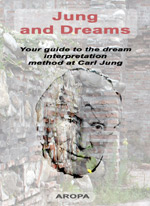Carl Jung Resources
The most
interesting theories of Jung's psychoanalysis concern the nature of the psyche and the analytical therapy. But there are also theories in the fields of culture, religion, future of the humanity, the Asian
philosophies and even yoga. He also wrote a commentary to the Tibetan Book of the Dead - Bardo Thodol - and an extensive book on UFO in concordance with his psychoanalytic discoveries and clinical
experience. Below we offer Jung's main theories by chapters so they can be read step by step.
The basic and most fascinating theories of Jung are dealt with in the following sections of this site: => Collective UnconsciousThis term describe a psychic collective stratum consisting in archetypes. => ArchetypesAre the contents of the collective unconscious. => Individuation ProcessDescribed by Jung, refers to an autonomous development of individual psyche leading to a more complex and complete ego-identity. => AlchemyAs Jung himself stated, alchemical symbolism provides the historical proof of his individuation process => SynchronicityCoined by Jung, this concept refers to the acausal coincidence of psychic and material events. => I ChingThe ancient Chinese divinatory book has been used by Jung both as a divinatory means and an illustration of his archetypes and synchronicity theories. => About Analytical Psychology Dream Interpretation Concerning the interpretation technique, Jung
added more features such as the This way he enlarged the genuine content of the dream to include more images and symbols that further help us understand its Jung's approach of psyche has many sources of inspiration. We list some of them below:
Best resources for the study of Jung' theories and practice
|
©AROPA, 2025.

 A great deal of inspiration brought Jung in regard to the dream interpretation method. First of all, he applied the
A great deal of inspiration brought Jung in regard to the dream interpretation method. First of all, he applied the